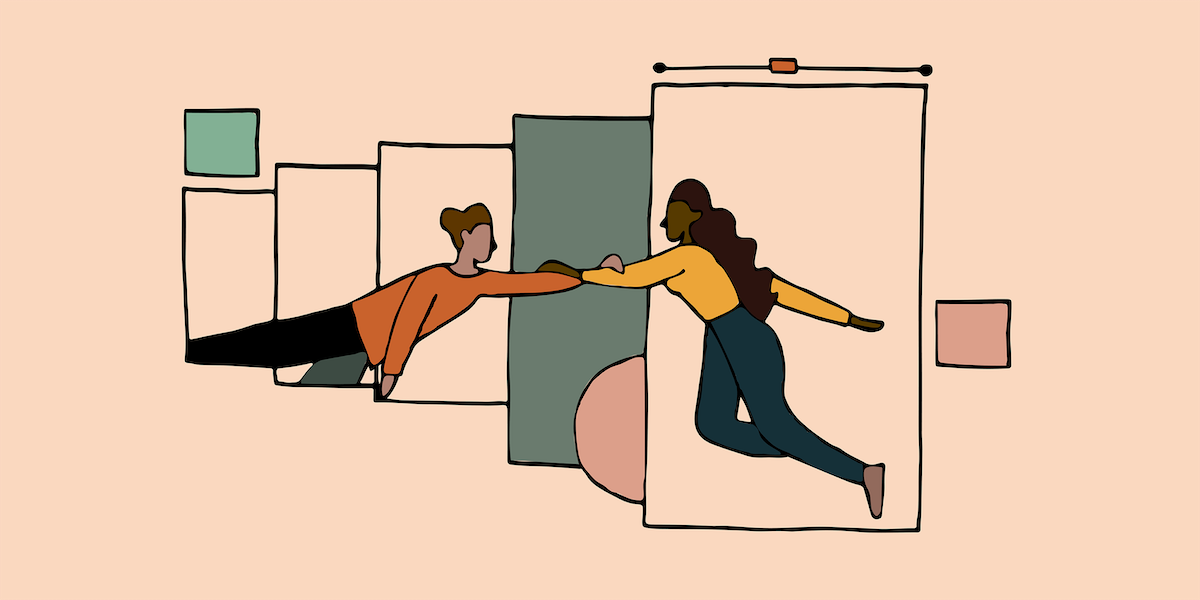A not-quite-textbook definition of systems design

Fall has arrived in the northern hemisphere, and you know what that means: cool weather, warm cider, and sitting around the holiday dinner table with my extended family, trying to explain to them what I do for a living as a systems designer.
When I started at IDEO six years ago, I had no idea what a systems designer was—only that I was one. Now, six years later, I have an answer, but I’m still perfecting the great-aunt-approved dinner table pitch.
The secret? It’s actually something you probably learned in your grade school language arts class: a good analogy.
If you’ve got approximately 10 minutes, I can tell you what I’ve learned about what I now proudly call my job—and how I’ve learned to explain it.
Systems and automobiles
An iPhone, the human body, buildings, cities, organizations, economies, the universe—all of those things count as systems, even though one can fit in your pocket and one is infinite. So what makes them all systems?
In a series of excellent lectures, Russell Ackoff, a pioneer in systems thinking, uses a simple analogy to explain systems: an automobile.
As Ackoff explains, a car needs to carry you from point A to point B. No individual part of a car can move you on its own—not the wheel, the axle, the seat, or the engine. But a car can. And if you take a car apart, you no longer have a car: you simply have the pieces, because “a system is not the sum of the behavior of its parts; it’s the product of their interactions.” That’s as true for a computer as it is for the universe—or any other system.
Systems design and architecture
Ackoff, a professor at Wharton Business School, criticized managers for focusing on business silos (marketing, operations, finance). He urged them to take a wider systems view—to think about the interactions that create the whole.
I couldn’t agree more. But if that’s systems thinking, what is systems design? What’s the difference?
Ackoff heralded one profession for understanding systems best: architecture. Architects begin with the needs of the client—bedroom, kitchen, living room, bathroom—but they don’t stop there. It wouldn’t make sense to design the rooms separately; they need certain adjacencies and sizes.
Importantly, Ackoff explains, the architect “will never modify the house to improve the quality of the room, unless the quality of the house is simultaneously improved.” To take this analogy a step further, think about it this way: you wouldn’t make the kitchen bigger if it meant getting rid of the bathroom. That would be a weird house.

Ahhh, so you're an architect?
Not exactly, although it’s no coincidence that I used to be a designer at an architecture firm. I think of myself as a “human-centered systems designer,” but that wouldn’t be the clearest thing to have on a business card.
IDEO is known for human-centered design, a process that takes inspiration from the needs and aspirations of people, most often end users. Human-centered systems design also starts with people, but requires looking at all the diverse stakeholders within a system—not just end users.
Let’s dive into another analogy: a school. If you’re designing a school, students are the end user. But the needs of teachers, parents, and administrators are equally important. For example, a few years ago we wanted to create a way for schools to change their culture. Since culture is intangible, it can’t be designed in and of itself. But you can design spaces, schedules, processes, roles, rituals, and incentives—tangible “levers for change” that help create culture. We zeroed in on the needs of school leaders, and developed School Retool, a professional development program that empowers principals to evolve their school culture.
When you’re designing a system with a lot of moving pieces, it’s hard to know where to start, and very easy to get lost in the “What if’s?” Design needs constraints, and focusing on human needs provides them.
But why human-centered systems design?
Let’s return to my man Russell Ackoff. He writes, “No problem ever exists in complete isolation. Every problem interacts with every other problem and is therefore part of a set of interrelated problems, a system of problems.” Ackoff even coined a term for systems of problems—he called them “messes.”
Indeed, our biggest problems—in education, health care, criminal justice, government—are systems challenges. And surprise: These are all human systems. When the parts of a system are made up of people, complexity is exponentially high because human feelings and needs are unpredictable and constantly changing. Despite good intentions, these important societal systems can be some of the least human-centered experiences we encounter today.
None of these problems can be solved in isolation, but it’s also easy to get a headache just thinking about tackling them.
Our most complex systems need human-centeredness the most. As a systems designer, I specialize in zooming in and out. I’m constantly jumping back and forth between the big picture and the details. I work with teams to bring the best of all disciplines together to design individual elements that form an integrated, cohesive experience for end-users. I ask questions like, “How might the environment support the new behaviors we’re trying to create? How might digital tools enable a new mindset?” I create intentional interactions between parts.
As the holidays creep closer and closer, I no longer dread the questions about work and career that come along with the appetizers. I finally have something my family is more likely to understand, thanks to the powerful and beloved literary device known as the analogy. Getting to this point feels like learning how to ride a bike—you pedal hard, gather speed, and finally crest the hill.
And if nothing else, I’ll just send all my family members a link to this piece. Hi, mom and dad!
Words and art


Subscribe

.svg)







